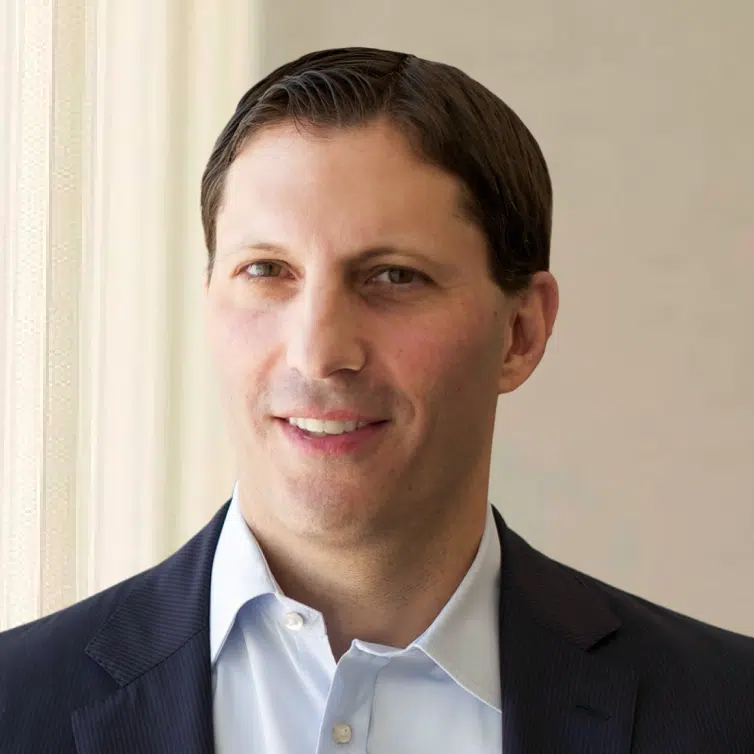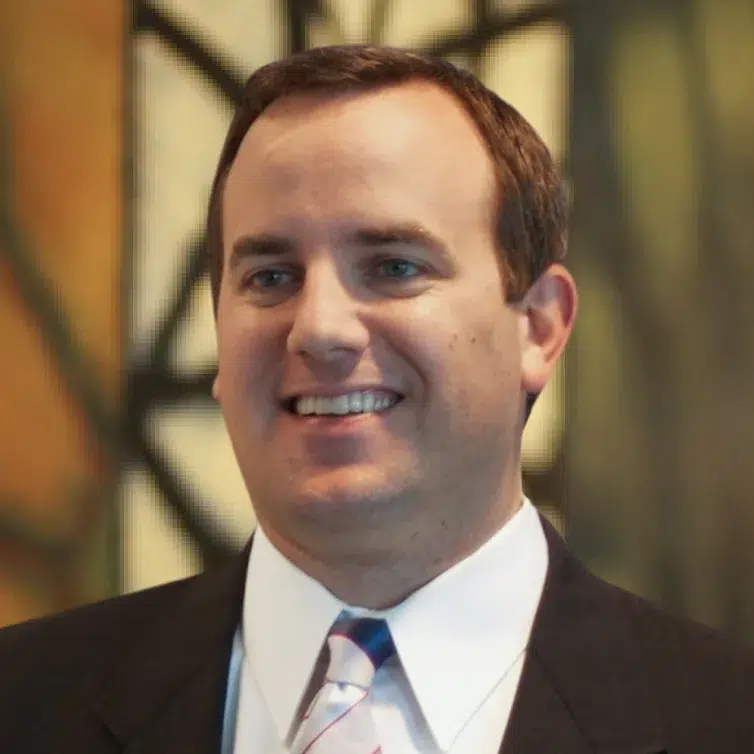
Warning: Past performance is not indicative of future results
This title should sound familiar. It is included in the fine print of nearly everything published in the investment world.1 However, very few investors seem to heed the warning. To the contrary, many people invest based on the past, and often the recent past, increasing investments that have performed well while decreasing investments that have performed poorly. While this “strategy” may work for short periods of time, it often fails over longer periods.
S&P 500 Total Returns – Annualized Over Seven Years
Preceding, Forecasted and Following September 30, 1999

S&P 500 Total Returns – Annualized Over Seven Years
Preceding, Forecasted and Following September 30, 2017

The charts above illustrate the challenge of using the past to make investment decisions. Each chart shows the seven-year annualized total returns decomposed2 into cash flow (dividends plus growth) and the valuation impact (change in profit margins plus the change in price-to-earnings). The decompositions reflect three different perspectives: the actual preceding seven years, the forecast our current Capital Market Expectations (CMEs) methodology would have produced as of that date, and the actual following seven years. We have discussed our methodology in previous Insights,3 so we’ll refrain from doing that here and instead turn our attention toward the key takeaways from the charts.
The first chart shows the seven-year trailing annualized total return for the S&P 500 as of September 19994 was 19.9% (Oh, the good ole days!). That return was comprised of 6.5% cash flow plus 13.4% from valuation impacts. Those three bars identify expanding valuations as the key driver that led to the peak of the technology, media and telecommunications (TMT) bubble. The expanding valuations were themselves driven by heightened levels of consumer confidence and misguided expectations that improving business conditions would persist indefinitely (see the panel discussion below).
Applying our current CMEs forecasting methodology to the seven-year period between September 1999 and September 2006 shows how cautious we believe investors should have been. At that time, our CMEs would have forecasted a paltry return of just 1.5% annualized. That’s largely due to a loss of 5.2% annualized as valuations returned back to more normal levels by the end of the forecast horizon. So, what actually happened in the following seven years? As the next three bars show, the S&P 500 averaged 2.2% from September 1999 through September 2006, quite close to what our forecasted expectations would have been if we used our current methodology at that time.
Aspiriant’s CMEs are in (very) good company
Our current CME framework5 is grounded on the principles of corporate finance, applying the impacts from cash flows and changing valuations on forward returns. Although we weren’t publishing and utilizing forecasts in 1999, other highly reputable firms were. One of them, Grantham Mayo Van Otterloo (GMO), is perhaps the best in the business when it comes to multi-year forecasting. In fact, in August 2008, the Economist published an article on the firm’s uncanny forecasting ability.6 Another firm, Research Affiliates, makes their forecasts readily available on their website.7 Because our approach is similar to these firms, our monthly outputs are also very similar. The key takeaway is that our current forecasting capability generally causes us to provide advice similar to those firms.
Okay, so where are we today? Unfortunately, we are in a very similar predicament. As the right-hand chart shows, investors have earned 15.4% annualized over the past seven years (similar to the late-1990s). We have once again “pulled forward” future returns, primarily through another prolonged period of expanding equity valuations, which accounted for 9.7% of that amount. As a result, our forward-looking CMEs are once again expecting 1.5% annualized return over the next seven years — equally lean as September 1999.8
Extra credit: Fair value ≠ market value
Critical readers may have noticed another insight contained within the above charts. The blue bars representing cash flow (dividends plus growth) are fairly consistent across each of the time periods and perspectives. That’s because those bars represent the fair value, or return on investment, paid by the 500 companies in the index to their shareholders. Investors frequently get this wrong, but fair value does not equal market value.
Fair value is what investors should earn if an asset were reasonably priced based on its future cash flow. Market value is the current price of the asset. Accordingly, market value may be artificially high or low as the outlook for those future cash flows and discount rates change.
Today, like 1999, we believe the market value of the S&P 500 is much higher than its long-term fair value.
It’s hard to catch falling knives
Last quarter, we described the importance of investing with a “margin of safety.” Importantly, our CMEs look out over a seven-year horizon to approximate a complete market cycle. As described above, they appear to do a pretty good job forecasting average annualized investment returns. Specifically, they help us assess when the coming years are more likely to be lean or bountiful. However, our forecasts should not be interpreted to represent smoothed (and certainly not equal) year-over-year expectations. Quite to the contrary, they may signal tough times ahead.
To illustrate our point, the chart below shows the drawdown9 of the S&P 500 since 1950. “Drawdown” estimates the loss suffered by investors holding an investment over a given time interval. For example, during the Global Financial Crisis (GFC), investors in a passive S&P 500 index fund lost 57% before their portfolios began to recover.10
Drawdown of the S&P 500

The table below shows what would have been our forecasted11 seven-year annualized returns compared to the actual seven-year annualized returns at three points in time. It also shows the percentile rank12 of each forecast out of the more than 330 monthly forecasts we modeled going back to January 1990. Finally, it indicates the drawdown experienced during the periods. The forecast as of September 30, 199911 is the same data presented in the bar charts above. It precedes the TMT implosion, which resulted in a drawdown of 49% before the S&P 500 began to recover. The data as of September 30, 200711precedes the GFC, and the final row indicates our current seven-year forecast.
Aspiriant CME Forecasts vs S&P 500 Actual Returns
Of course, we won’t know for certain what the next seven years will hold until we experience them. And, as we have previously written, we are not expecting a significant drawdown in the near-term. Rather, we are expecting low future returns, persisting through periodic pullbacks and advances, until such time that the companies grow into their current valuations.
Preparing for the storm before it arrives
Three years ago, we started taking steps to prepare for the storm we see brewing on the horizon.13 To do so, we began building a defensive posture in our portfolios. Since then, we have slowly but meticulously fortified our defenses. Every few months or so, we have reduced the riskiest assets in our portfolios, replacing those exposures with allocations that we think offer better downside protection and provide superior risk-adjusted returns over a full market cycle. We have been intentional about how we have trimmed risk and will continue to do so if markets march even higher.
For example, we introduced defensive equities and defensive strategies into our portfolios over the past few years. Historically, each of these asset classes has tended to marginally underperform its respective benchmark during bull markets, but has significantly outperformed during bear markets. Although we expect these asset classes to help protect against downside risks, rotating into them has not inhibited our ability to generate attractive absolute returns. For example, as of September 30 our moderate portfolio is up 9.7% year-to-date and our growth portfolio is up 12.6% year-to-date, despite our defensive posture.14
This raises an obvious question: If we didn’t think the storm would hit for a few years, then why didn’t we wait a little longer to start becoming defensive? Answer: Because it is impossible to prepare for a storm, whether financial or natural, after it arrives. Successful investors constantly monitor and assess the probability of impact as well as the corresponding loss. Based on those assessments, they prepare in advance to minimize the effects of extreme negative events, even if that means foregoing some near-term upside potential.
Successful investors run away from the herd
Why shouldn’t market value be higher than fair value? Earnings, employment and consumer confidence are at or near all-time highs. Borrowing rates and inflation are at or near all-time lows, and broad tax cuts are (apparently) coming. Plus, the S&P is on pace to tie its record for the most consecutive months of positive returns. So, what’s not to love? In the near-term, perhaps nothing. In the long-term, perhaps everything.
In the near-term, we would not be surprised if the market continues to march forward, but for the wrong reasons. Again, there are really only two “right” reasons: Either dividends have to increase, or growth has to increase (or both). It’s quite clear (and intuitive) that dividend yields have continued to compress as the market has increased. It’s also quite clear that growth continues to fall short of expectations, despite the recent modest improvements. The laundry list of “wrong” reasons is quite long. But, in general they relate to over-inflated expectations of growth, rates and inflation, which we believe will remain elusive.
As we mentioned last quarter, we have developed EKGs that allow us to monitor the strength and direction of tailwinds and headwinds moving across the investment landscape. While discussing each of them is beyond the scope of this letter, we highlight two of them, employment and consumer confidence, below. The conclusion from that discussion is running away from the herd may be better than running with it.
High Employment = Consumer Confidence = Low Returns???
In order to justify lofty equity valuations, people often cite high levels of consumer confidence, which they claim leads to robust consumer spending, which is a primary driver of economic growth. The University of Michigan’s monthly index recently stood at a level of 98, which has only occurred in 54 out of nearly 400 completed seven-year rolling periods since February 1978. Unfortunately, there is a major flaw in relating current consumer confidence to future investment returns: It doesn’t work!
U.S. Consumer Confidence and Unemployment
Returns When Consumer Confidence Was 98+
The chart on top indicates consumer confidence is largely driven by employment, which makes sense. If you have a job, you’re generally more confident than if you’re unemployed. Moreover, a wealth effect occurs after the stock market has gone up for a while. Secure employment and more wealth lead to higher levels of confidence. Unfortunately, investors inappropriately project that comfort forward, believing the good times will continue forever. Unfortunately, the data proves otherwise. The table on the bottom breaks down the 54 seven- year periods in which consumer confidence started at a reading of 98 or higher. Fifty-five percent of the time (or 30 out of 54) the S&P 500 generated less than 3% annualized. One might be tempted to retort, “Yes, but in 11% of the occurrences (six out of 54), equities generated returns of more than 10% annualized.” However, in each of those six instances, the Shiller PE ratio15 was 14x or lower. Today, it stands at more than 30x.
In the long-term, and in no particular order, we are concerned about reduced spending due to aging demographics, debt deleveraging, and sluggish productivity, as well as wealth inequality, geopolitical uncertainty and (of course) elevated valuations across all financial assets. Moreover, it is unclear that automating away millions of low-level jobs in the coming years will be a net benefit to the overall economy, particularly in the absence of effective worker retraining programs. On a combined basis, these concerns virtually eliminate any margin of safety, further convincing us that this is a bad time to grasp for every last dollar of return.
As always, we will continue to actively monitor the investment environment and will communicate any changes in our outlook and portfolio positioning as they occur.
Footnotes:
1Regulatory agencies, including the Securities and Exchange Commission (SEC) and Financial Industry Regulatory Authority (FINRA), require that a variation of the phrase be included in offering materials.
2In practice, the decomposition analysis contains “other effects” that aren’t readily observed or explained by cash flow and valuation impacts alone. For simplicity, we combine the other effects into valuation impact. Doing so is fairly immaterial since other effects tend to be close to 0%, typically ranging from +1% to -1% per year.
3For a broader discussion, please see Second Quarter 2017 Insight and First Quarter 2017 Insight.
4It’s important to note that the S&P 500 advanced an additional 20% between September 1999 and September 2000 before the gravity of stretched valuations precipitated a multi-year pullback. However, we never attempt to time the market, and we don’t believe anyone has developed repeatable skill in that regard.
5For a broader discussion, please see our CME Insight published in March 2016.
6The Economist, “The long and short of it,” August 3, 2008.
7Source: https://interactive.researchaffiliates.com.
8As referenced above, calculated as if our current CME methodology was in place at the time using the applicable data as of that date.
9Maximum drawdown calculated on a daily basis.
10March 9, 2009, marked the end of the drawdown period during the GFC. That was the first trading date after Federal Reserve Chairman Ben Bernanke and U.S. Treasury Secretary Timothy Geithner began socializing their plan to stabilize and resuscitate the financial system.
11As noted earlier, the prior period forecasts referred to in the tables were not actually in place at those points in time, but rather are modeled using our current CME methodology and the applicable data at the date indicated in the table.
12A percentile indicates the rank order of the observations in a data set. For example, the 6th percentile in the table indicates that the forecast was in the lowest 6th percent of all 330 monthly forecasts.
13For a broader discussion, please see “Preparing for Stormy Seas,” published in December 2014.
14Model portfolio performance is hypothetical returns compiled by Aspiriant using Morningstar Direct based on recommended asset allocations and investments during the period indicated. Hypothetical returns do not represent actual returns experienced by any particular client and do not take into account the impact that actual trading, cash flows, rebalancing, or fees and expenses would have on actual results for actual investors.
15The Shiller price-to-earnings ratio for the S&P 500 is calculated as the current market capitalization divided by the 10-year trailing average of the consolidated earnings of the underlying companies, adjusted for inflation.
Important disclosures
Past performance is no guarantee of future performance. All investments can lose value. Indices are unmanaged and it is impossible to invest directly in an index. The volatility of any index may be materially different than that of a model.
Equities. The S&P 500 is a market-capitalization weighted index that includes the 500 most widely held companies chosen with respect to market size, liquidity and industry. The Russell 2000 Index measures the performance of the small-cap segment of the U.S. equity universe. It is a subset of the Russell 3000 Index representing approximately 10% of the total market capitalization of that index. It includes approximately 2000 of the smallest securities based on a combination of their market cap and current index membership. The MSCI EAFE Index (Europe, Australasia, and Far East) is a free float-adjusted market capitalization index that is designed to measure the equity market performance of developed markets, excluding the U.S. and Canada. The MSCI Emerging Markets Index is a free float-adjusted market capitalization index that is designed to measure equity market performance of emerging markets. The MSCI ACWI Index is a free float-adjusted market capitalization weighted index that is designed to measure the equity market performance of developed and emerging markets.

 Talk to us
Talk to us 

















